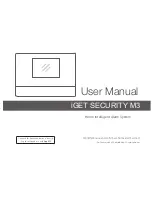
USER MANUAL
EMDC
–
ENOCEAN MOTION DETECTOR AND LIGHT LEVEL SENSOR
© 2020 EnOcean | www.enocean.com
EMDC User Manual | v1.0 | March 2020 | Page 31/75
6.2.2
Dynamic security key modification
One fundamental problem with both content protection and content authorization is that us-
ing the same input data (plain text) with the same key always yields the same encrypted
data and the same signature.
This enables attacks based on monitoring previous system behaviour. If an attacker has
observed that a certain data telegram results in a certain light being turned on then he could
use this information to identify - or even actively send - similar telegrams in the future. This
type of attack is often called
Replay Attack
since it works by reusing (replaying) previously
used data telegrams.
In order to prevent this type of attack, either the telegram data or the security key must
change to ensure that identical input data does not create identical encrypted radio tele-
grams. The mechanism used by the transmitter to change the telegram data or the security
key has to be known to the receiver in order to correctly decrypt and authenticate received
data telegrams.
The change of telegram data or security key is typically ensured by means of monotonously
incrementing counters (often called Rolling Code or RLC in short).
The value of such counter is then used to either modify the telegram payload (usually by
appending it to the payload) or the security key. EnOcean systems use the latter approach.
Figure 16 below illustrates the concept of dynamic key modification used by EnOcean radio
systems.
Figure 16
–
Dynamic security key modification
Decryption
Dynamic Key
Unencrypted Data
(Plain Text)
Encryption
Unencrypted Data
(Plain Text)
Encrypted Data
Dynamic Key
Encrypted Data
Secret Key
Incrementing
Counter
Secret Key
Incrementing
Counter
Data Valid?
NO
YES
















































